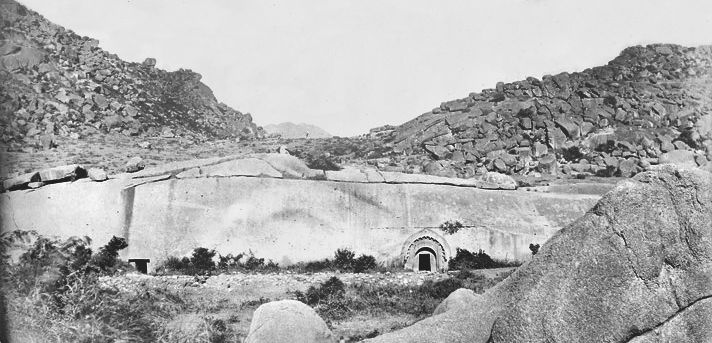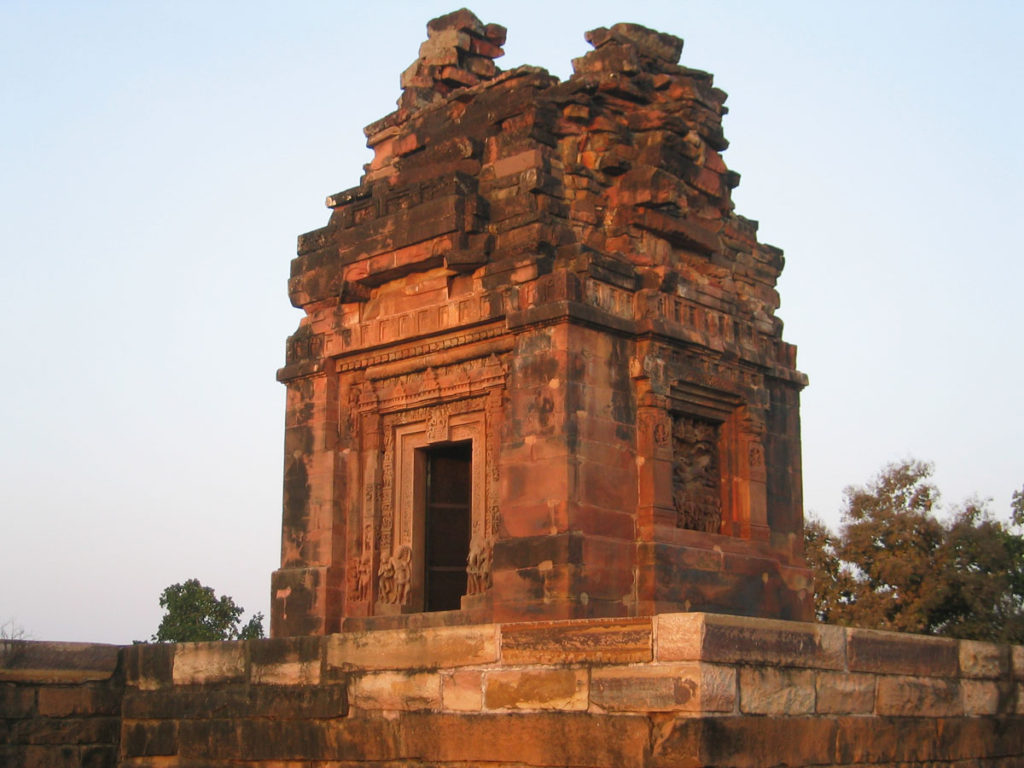Be it a postcard from your travels or a raging political debate over an ancient piece of land—one image that arches over our collective Indian consciousness is that of the temple. More specifically, the Hindu temple. Temples in India bring to mind an imposing superstructure overflowing with brightly coloured statues and noisy devotees. Add to that, pushy shop-keepers, slippery floors and in some cases, even rats and rodents!
Probe a bit deeper into the philosophy behind temple building in India, though, and you’re in for a treat. These structures traditionally functioned as the cosmic centres of the community and were places of deep spiritual reflection. Architecturally, however, the temple had a rather humble beginning. In fact, it wasn’t meant to be a permanent structure at all!
A somewhat continuous history of religious architecture in India can be traced from the 3rd century BCE. Information of the ages before that are sketchy or non-existent. Although there is a lot of archaeological evidence to provide us with the socio-economic context of the Subcontinent’s earliest civilization, the Indus Valley Civilisation from 3300 to 1300 BCE, nothing can be postulated about their religious history with certainty.
There is a sudden gap in the architectural history of India from the centuries that witnessed the decline of the Indus Valley and the arrival of a migrant group from Iran who called themselves the Aryas. This period is today called the Vedic Age (1500 – 500 BCE), primarily because the four Vedas were written during this time by the new settlers. The lack of any archaeological record from the Vedic Age is explained by the likelihood that they largely used perishable raw material like wood.
From this period, however, a lot of literary evidence survives that speak of various nature-gods, religious ceremonies and their all-time favourite activity, the yagya or fire sacrifice. Yagyas were performed to barter articles with a chosen god in return for rain, harvest or whatever else your average Arya wished for in the 5th century BCE. The yagyas were also always accompanied by temporarily built brick-altars where a fire could be lit, precious things like ghee and milk could be offered in barter and the gods could basically be made to take note.
It is only from the 3rd century BCE that evidence of more permanent religious architecture begins to emerge. These earliest structures were somewhat transitional – part man-made, part natural, carved directly into mountains and rocks. The Lomas Rishi Caves in Barabar Hills (Bihar), is one of the oldest of such rock-cut caves, possibly a result of Mauryan patronage of the Ajivika sect. A man-made cave, the Lomas Rishi consists of a large rectangular hall and a small oval chamber. It is fronted by an arched doorway carved to replicate the roof of a thatched hut, complete with wooden beams.
This period in India also saw the rise of monotheistic religions like Buddhism and Jainism, which contributed significantly to the growth of rock-cut architecture. Today, Buddhist rock-cut caves like those in Ajanta, Karla and Bhaja proudly dot the ancient trade routes of the country. The epitome, however, of this architectural style was achieved in the Kailashnath Temple in Ellora. Constructed over a period of three centuries, the complex at Ellora houses Buddhist, Jain and Hindu religious buildings. Kailashnath Temple, dedicated to Shiva, is the largest in the complex and is a monolithic shrine created by carving into a rock mountain exactly where it stood!
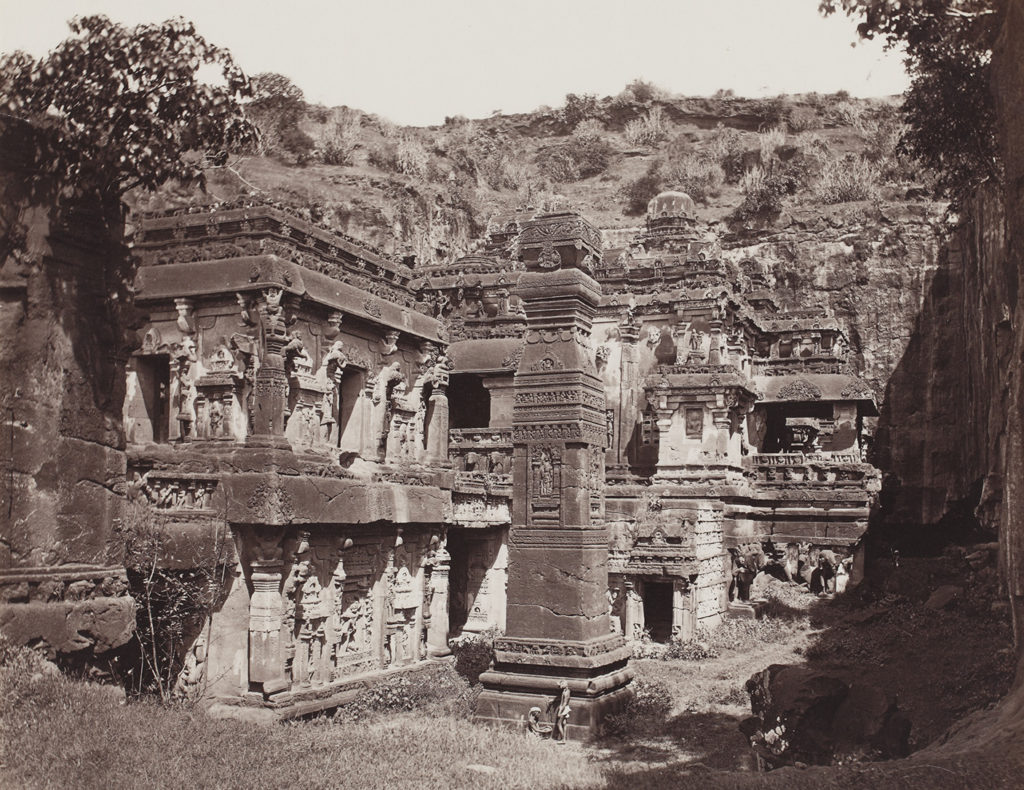
Kailashnath temple, Ellora © Sarmaya Arts Foundation
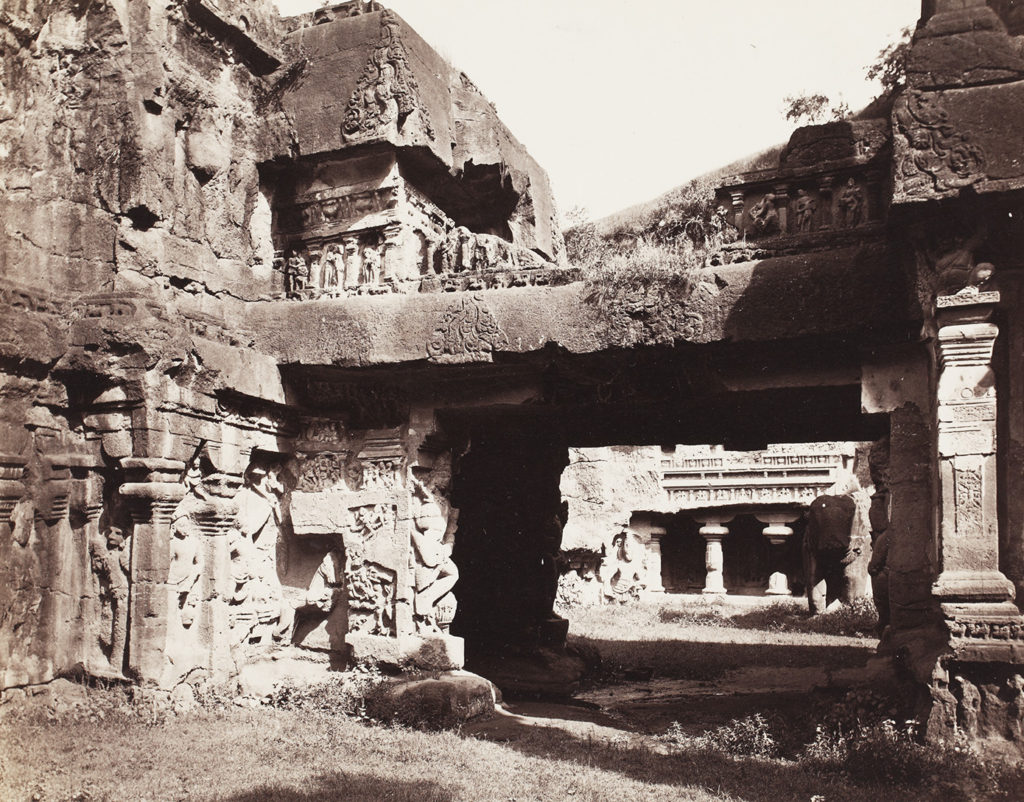
Kailashnath temple, Ellora © Sarmaya Arts Foundation
While artists in South and West India were busy scooping out temples from mountains, the folks in North were experimenting with completely free-standing structures. Terracotta, brick, stone— they used it all. One of the earliest stone temples to survive from this period is found in a little-known village in Uttar Pradesh called Deogarh.
Dated to the 5th century CE, the Deogarh temple is dedicated to Vishnu and was developed under the patronage of the Gupta rulers. It is one of the earliest surviving temples with a shikhara or high, peaked roof. In this temple one can see traces of what was later to become the Nagara Style of Temple Architecture – four rows of stairs lead up to a platform on which stands a single-celled garbhagriha (sanctum) with a shikhara. The entry to the sanctum is an elaborate doorway carved with figures of Yamuna and Ganga, another early trace of an element that was soon to become the norm in all Hindu temples. Now-demolished smaller shrines (perhaps housing subsidiary deities) were erected in four corners of the platform.
The following decades, and centuries, saw an unprecedented rise in temple building across the country—from the Martand Temple in Kashmir to the Shore Temple in Mahabalipuram. Various regional styles cropped up, the iconography of the Hindu pantheon expanded exponentially and the rules of art and architecture were canonised in the Shilpa Shastras.
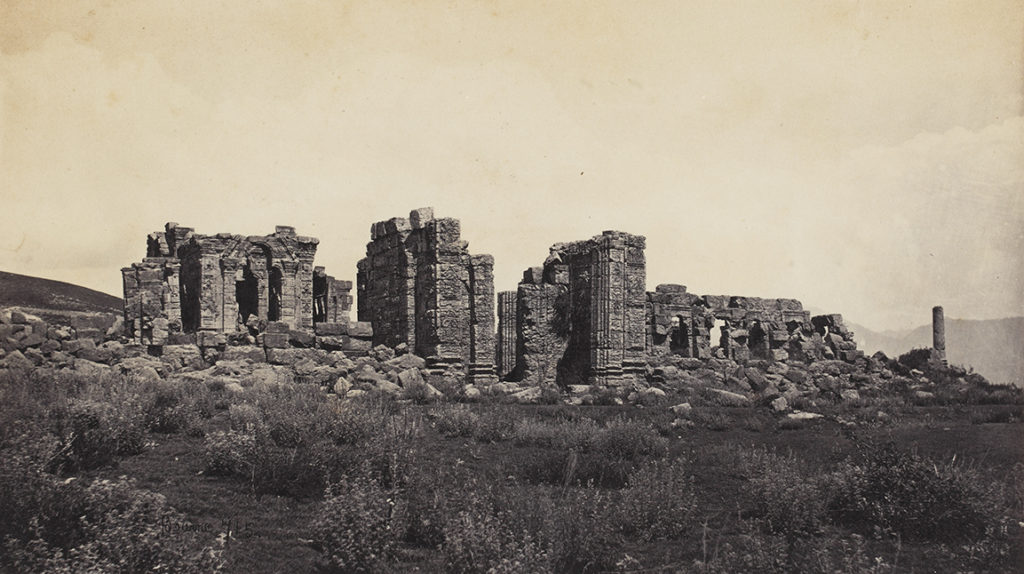
Martand Sun Temple, Anantnag. Photograph by Samuel Bourne © Sarmaya Arts Foundation
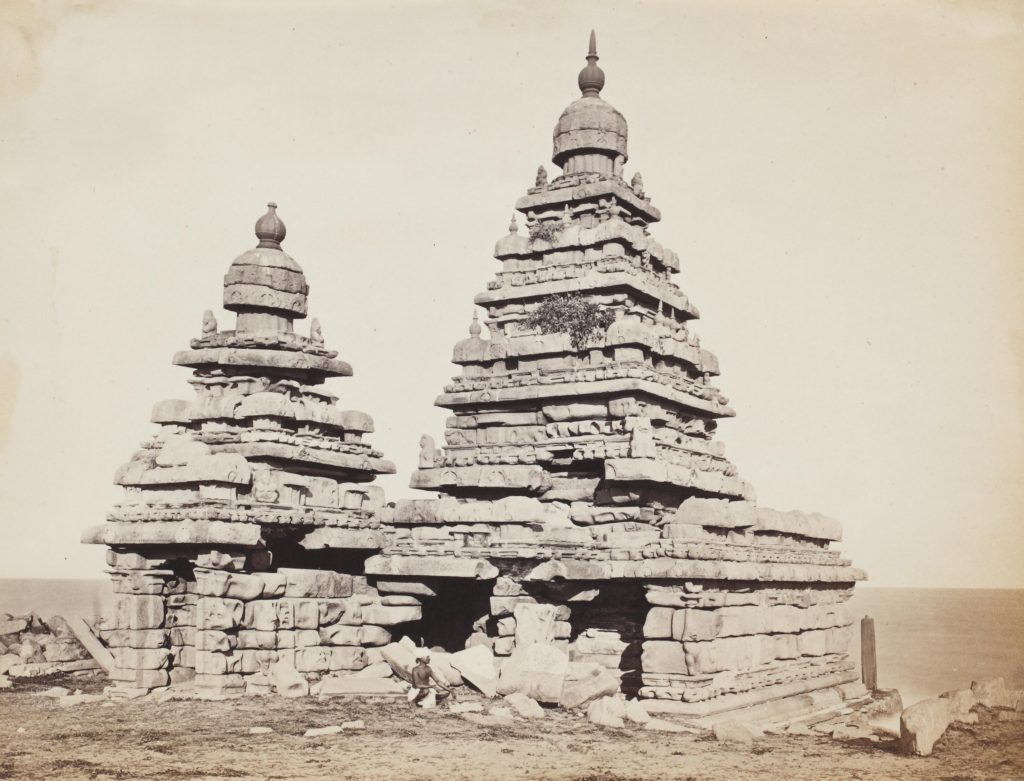
Shore Temple, Mahabalipuram, albumen print by Francis Frith, c 19th century © Sarmaya Arts Foundation
As temples grew in size, they began to occupy a more central role in a community’s life. Believers could gather here for everything from spiritual guidance to an evening of wholesome entertainment. Many still serve that function today, but many more have gone beyond to achieve the status of symbols. Their humble, primitive forms forgotten in the mists of time, temples are now political, social and cultural nerve-centres. The structures reflect this change and where once a temple hunkered close to the earth, its spires now soar high into the heavens, carried by the winds of fame, fortune and faith.
Shubhasree Purkayastha is Curatorial and Research Associate at Sarmaya

